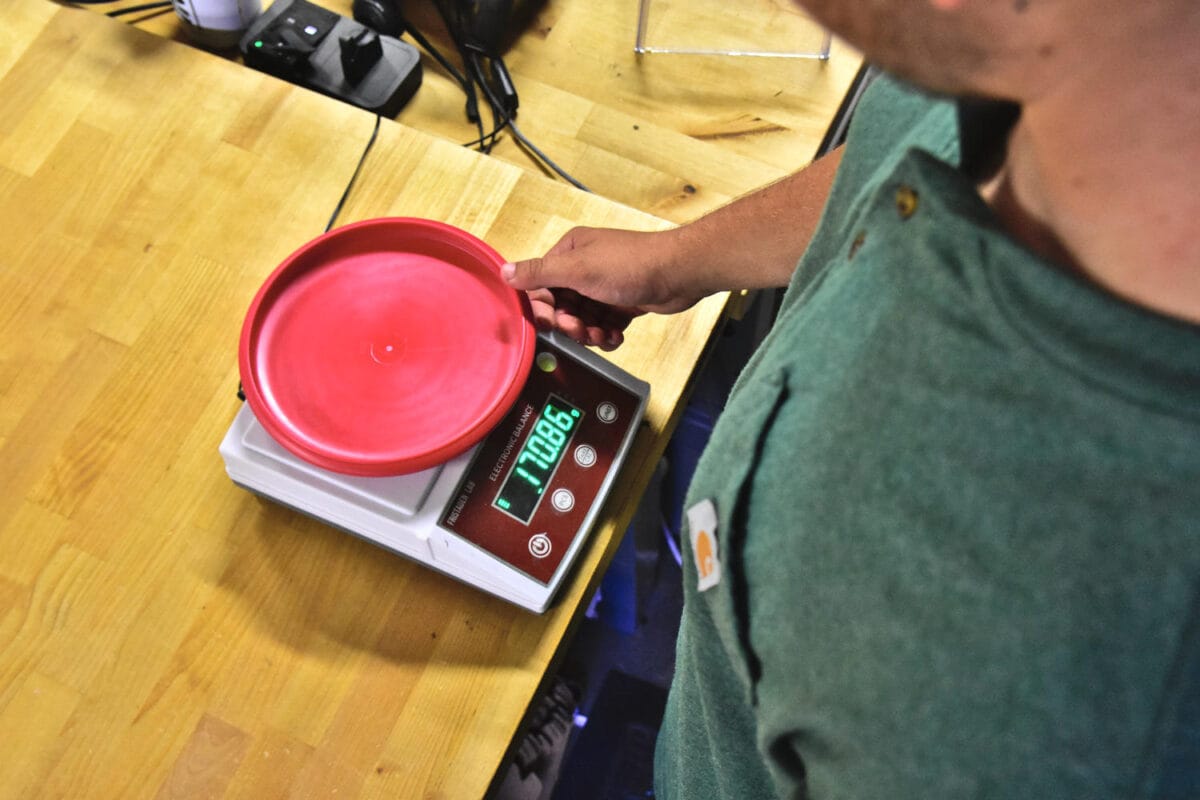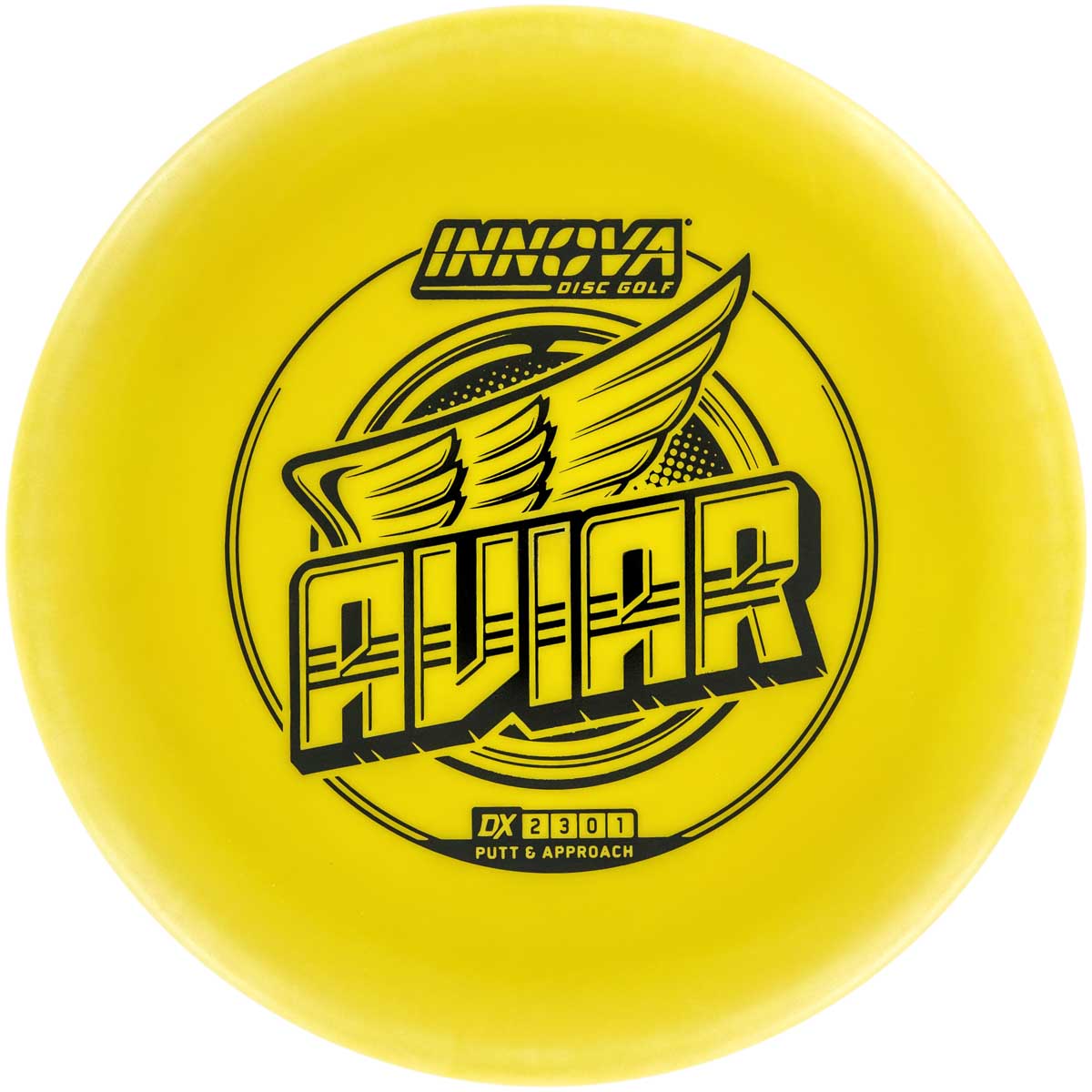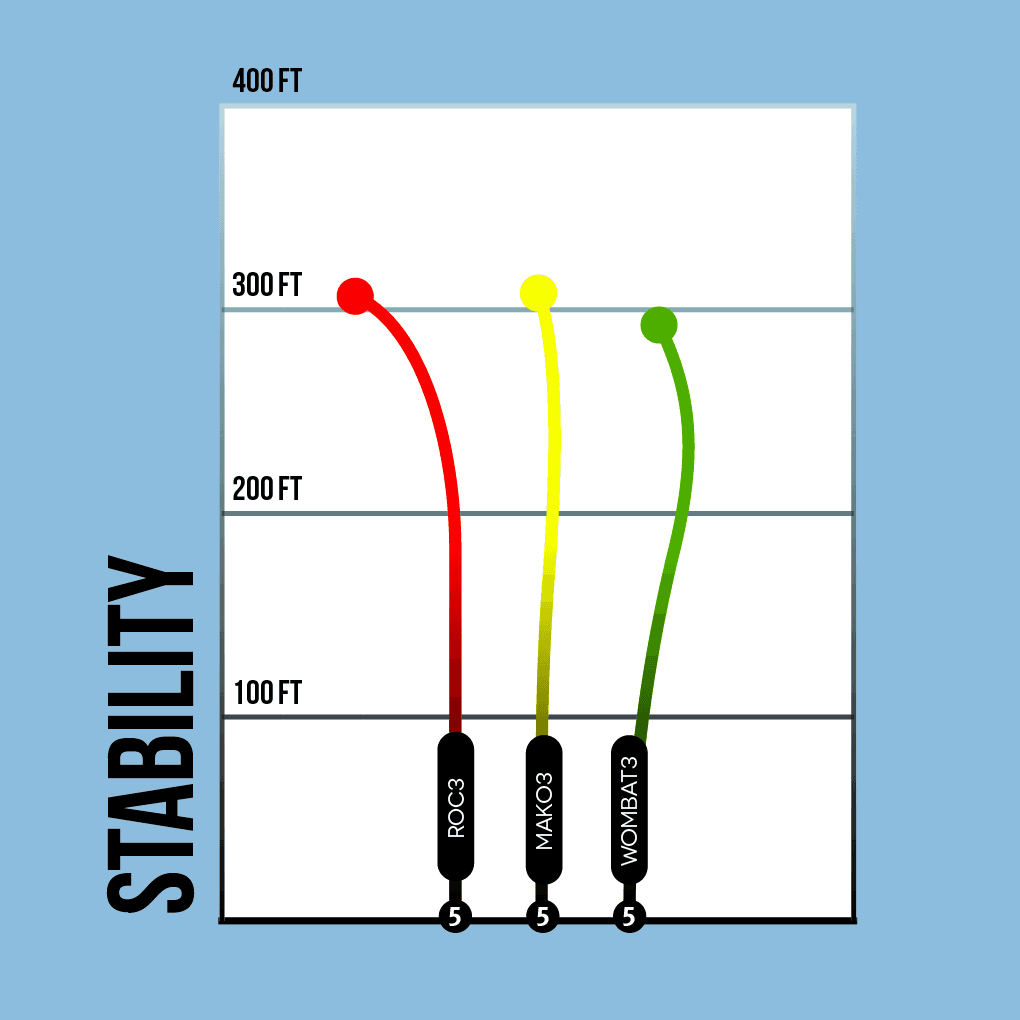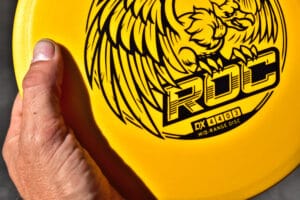Disc Weight: How to Choose What’s Best For You
Table of Contents
Disc golf is a popular sport that requires skill, precision, and the right equipment. One essential aspect of your equipment is the weight of your disc golf discs. The weight of your discs can significantly influence your game, affecting factors such as stability and distance. Knowing the appropriate weight for your discs can help you improve your overall performance and enjoy the game to its fullest.
Many factors determine what weight is best suited for your disc golf discs, including skill level, personal preference, and the type of throw you want to achieve. Disc golf discs typically weigh anywhere between 150 to 180 grams, with some outliers weighing more or less for specific purposes. Experienced players often use heavier discs for added stability and control, while beginners might find lighter discs more accessible, forgiving, and easier to throw. You may be asking if you should start with heavier discs or lighter discs. We’ll do our best to help answer that for you in this article.
Key Takeaways
Fundamentals of Disc Weight
Disc Golf Terminology
In disc golf, the weight of the disc plays a crucial role in the flight characteristics and overall performance. The most common weights range from 150 grams to 169 grams for beginners and 165-175 grams for more experienced players. Different types of discs, such as putters, mid-ranges, and drivers, often have varying weights for optimal performance and flight stability.
Understanding Disc Stability
Weight can affect disc stability, which refers to a disc’s flight path when thrown with proper technique and power. Simply put, the heavier the disc is, the more overstable it will fly. This means the disc will resist turning or flipping over more than a lighter disc. And, that applies to any disc including a very overstable disc like a Firebird or a very understable disc like a Mamba. The opposite is also true: The lighter the disc the more understable it will fly. Understable discs have a greater tendency to turnover or flip.

Weight Classes and PDGA Rules
The Professional Disc Golf Association (PDGA) regulates disc specifications, including weight limits. The PDGA Guidelines state that a legal disc golf disc must not exceed a maximum weight of 200 grams. It’s essential for players to familiarize themselves with these weight limits to ensure they are using approved equipment for competitive play. In addition to the legal weight limit, discs sometimes fall under special designations, such as the “150 Class,” which includes discs weighing below 160 grams.
When selecting the right disc weight, players also need to consider their skill levels, throwing styles, and personal preferences. Experimenting with various disc weights, stability levels, and types of discs can help players improve their performance and enhance their overall disc golf experience.
Selecting the Right Weight for Your Discs
When choosing the appropriate weight for your disc golf discs, a variety of factors should be taken into consideration. This section will guide you through the decision-making process by addressing skill level and experience, throwing power and arm speed, age and physical strength, and stance and proper form.
Skill Level and Experience
For beginners, it is generally recommended to start with lighter disc weights, between 150 grams and 169 grams. Lighter discs are easier to control, making them ideal for those new to the sport. As players gain experience and improve their skills, they can experiment with heavier discs, which often provide more stability when thrown. ***Tip. Even after gaining experience, an overstable disc like a Destroyer can still be too much for many disc golfers in the 173-175 weight. Scale down to 165-169 grams or even 164 or below. With a lighter weight, you’ll find the overstable flight you want, but at a weight you can actually throw.

DX Aviar Putt & Approach
Excellent Disc Available in Light Weights
Make putting, short drives, and approaches a breeze with the DX Aviar. Lighter weights are easier for newer and less powerful players to handle. It’s available as low as 140-150 grams.
Throwing Power, Arm Speed & Weight
The weight of a disc golf disc can also affect throwing power and arm speed. Players with a strong throwing power and fast arm speed may benefit from using heavier discs, while those with less strength or a slower arm speed may find lighter discs more suitable. For instance, mid-range discs with a weight between 151-169 grams are optimal for those with average arm speed, while more experienced players may choose heavier mid-range discs between 178-180 grams.

Age and Physical Strength
Your age and physical strength play an important role in determining the right disc weight. Younger players and those with less physical strength can benefit from using lighter discs, as they are easier to control and require less energy to throw. Conversely, older and more physically strong players may prefer heavier discs that offer greater stability during throws.
Stance and Proper Form
Adopting a proper stance and form when throwing a disc is essential for maximizing performance. A well-executed throw can compensate for a disc that may not be the ideal weight for your level of experience or physical strength. Practicing correct form can ultimately help you better understand the relationship between disc weight and your throwing capabilities, allowing for better-informed decisions when selecting the appropriate weight for your discs.
Impact of Disc Weight on Flight Path
The weight of a disc golf disc plays a crucial role in determining its flight path. In this section, we will explore the impact of disc weight on distance, glide, turn, and fade, as well as wind resistance.
Distance and Glide
Heavier discs require more force to be thrown as compared to lighter discs. This extra force, in turn, affects their distance and glide. A lighter disc generally requires less effort to throw, resulting in more accurate throws. However, it also means that they may not cover as much distance as heavier discs.
On the other hand, a heavy disc requires more effort to throw but can potentially cover a longer distance if thrown correctly. The glide, or the ability of the disc to stay aloft, is also influenced by its weight. Heavier discs generally have less glide than lighter ones, making it essential for players to strike the right balance between distance and glide based on their skill level and playing conditions.
Turn and Fade
The weight of a disc golf disc also affects two essential flight characteristics – turn and fade. Turn refers to the initial movement of the disc to the right (for right-handed throwers) when released, whereas fade describes the disc’s natural tendency to curve back to the left towards the end of its flight.
Heavier discs are generally more overstable, exhibiting less turn initially and fading more predictably towards the end of their flight. Conversely, lighter discs may demonstrate more turn at the beginning and less predictable fade later in their flight (and thus more understable). This factor should be considered when choosing the appropriate disc weight based on a player’s preferences and throwing style.

Wind Resistance
Wind resistance plays a significant role in determining a disc’s flight path, and the weight of the disc can influence how it performs in different wind conditions. Lighter discs are more susceptible to being affected by headwinds and tailwinds, which may make them harder to control and result in reduced distances. Heavier discs, weighing around 165 grams, are generally more resistant to wind interference, providing increased consistency in various wind conditions.
In summary, players need to consider the disc weight’s impact on distance, glide, turn, fade, and wind resistance when selecting the appropriate disc golf disc for their skill level and playing conditions. Balancing these factors can ultimately lead to improved performance and enjoyment on the course.
Disc Types and Their Ideal Weights
Putters
Putters are the most important discs in a disc golfer’s arsenal, and they typically serve for short-distance approach shots and putting situations. The ideal weight for putters is usually between 165-175 grams. Heavier putters can provide more accuracy and stability, especially during windy conditions. However, it is also essential to consider the player’s preference and experience level, as some may prefer lighter putters for a more effortless throw.
Mid – Range Discs
Mid – Range discs fill the gap between putters and drivers, offering control and accuracy in a variety of situations on the course. These discs typically range in weight from 160 to 180 grams. A heavier mid-range disc can offer more stability and predictability in various wind conditions. On the other hand, lighter mid-range discs require less power to achieve longer distances and are often suitable for beginners or players with slower arm speeds.
Fairway & Distance Drivers
Fairway and distance drivers are designed for long-range shots and maximizing distance. For these discs, weight can significantly affect their flight characteristics and overall performance. Fairway drivers generally have a weight range of 150-175 grams, while distance drivers can be as light as 135 grams or as heavy as 175 grams.
Light discs are often preferred by beginners, as it can enable them to achieve greater distance with less effort. In contrast, more advanced players may opt for heavier drivers, providing more stability and control in various wind conditions. The choice of driver weight ultimately depends on the individual player’s skill level, throwing style, and personal preferences.
What's Next?
Need help finding the perfect disc for a specific shot, better accuracy, or more distance? We’re here to help! Just follow the link below to answer a short questionnaire. We’ll send you FREE personalized disc recommendations within 1 business day along with a coupon code for $5 off your next order.
GET PRO TIPS




4 comments